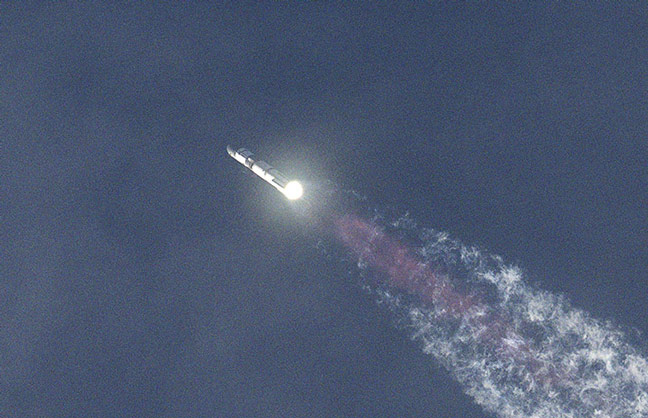SpaceX is in discussions with officials from the United States and Australia to explore the possibility of landing and recovering one of its Starship rockets off the coast of Australia, according to sources familiar with the situation. This initiative could mark a significant step toward increasing SpaceX’s presence in the region, as the U.S. and Australia work to strengthen their security ties.
In June, a Starship rocket completed a controlled splashdown in the Indian Ocean, marking a milestone in SpaceX’s testing campaign. The company is keen to expand this testing to ensure the reliable landing and recovery of the Starship boosters, which is crucial for the rapid development of this massive and reusable rocket. Starship is designed to carry satellites into orbit and transport astronauts to the moon.
The proposed plan involves launching Starship from a SpaceX facility in Texas, with the rocket landing in the sea near Australia’s coast before being recovered on Australian territory. However, this would require adjustments to U.S. export controls on advanced space technologies being sent to Australia, as per the sources who spoke under anonymity. The Biden administration has already shown a willingness to ease similar restrictions under the AUKUS security alliance, which includes the United States, Australia, and Britain, and aims to counter China’s influence.
Currently, neither SpaceX nor the U.S. Space Force and the Australian Space Agency have commented on the discussions. The plan would ideally involve towing the Starship, whether it lands in the ocean or on a barge, to a nearby port on Australia’s western or northern coasts. However, specific details and locations are still under discussion, according to the sources.
These discussions highlight the U.S.’s commitment to supporting Australia in enhancing its military capabilities, especially as a counterbalance to China’s growing assertiveness in the region. The potential arrangement with SpaceX could also foster stronger civil and military space collaboration between the U.S. and Australia and help expand Australia’s space defense capabilities.
The talks are still ongoing, and the timing for any Starship landing off Australia’s coast remains uncertain. The sources indicated that these initial test landings could pave the way for a more significant SpaceX presence in Australia. This could include launching rockets from Australian soil or landing Starship boosters on land instead of at sea, though these possibilities are still in the early stages of discussion.
SpaceX has a history of conducting ocean-based landings during the development of its Falcon 9 rocket, a precursor to attempting landings on solid ground or barges at sea. Falcon 9, now SpaceX’s primary rocket, has completed hundreds of landings.
The Starship rocket, standing at 400 feet (120 meters) tall, is a two-stage system designed for full reusability. It represents SpaceX’s next-generation technology, capable of deploying large satellite payloads, supporting NASA’s lunar missions, and potentially transporting military cargo globally in about 90 minutes.
The June test flight of Starship was its most successful yet. The rocket was launched from Texas, reached a suborbital trajectory, and then re-entered Earth’s atmosphere at hypersonic speeds before executing a soft splashdown in the Indian Ocean, 90 minutes after launch. Its booster, SuperHeavy, landed in the Gulf of Mexico. Previous tests had not achieved safe landings, but the success in June has encouraged SpaceX to proceed with more complex landing tests.
The U.S. Air Force Research Laboratory’s “Rocket Cargo” program envisions using suborbital rockets for rapid military cargo deliveries worldwide in about 90 minutes, known as point-to-point delivery. U.S. defense officials view the June Starship test as a critical demonstration of this capability.
A Starship launch from Texas with a landing off Australia would further validate this rapid delivery concept. Although still in the early stages, the ability to deliver cargo globally using orbital speeds of 17,000 miles per hour (27,350 kilometers per hour) and a hypersonic atmospheric reentry could dramatically reduce delivery times compared to traditional aircraft, which typically take 12 to 24 hours.
SpaceX has been investigating the use of Starship for such deliveries under a $102 million Pentagon contract since 2021. This project is expected to progress to a more advanced prototype phase with the U.S. Space Force in the following year, as outlined in the 2025 budget documents.





